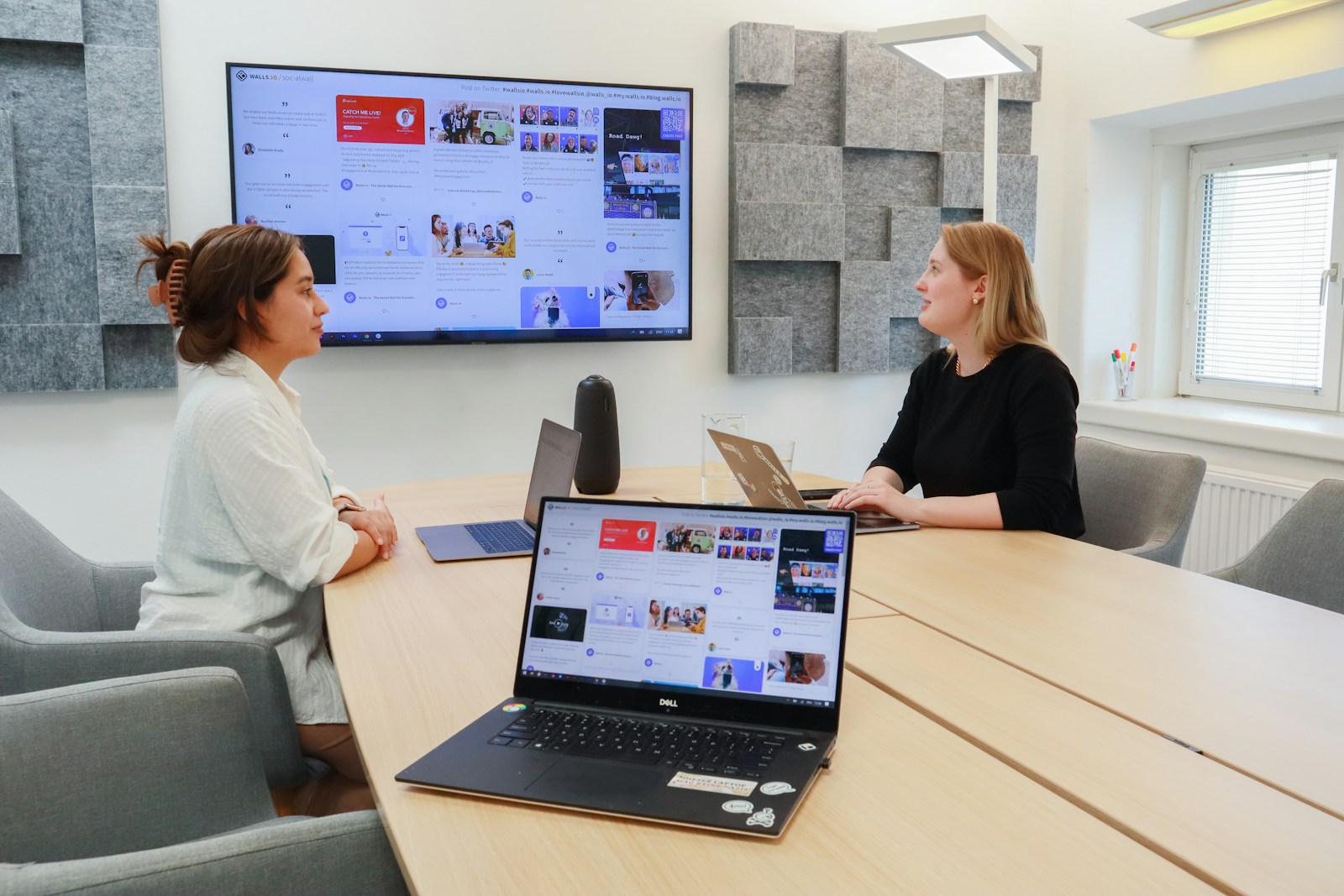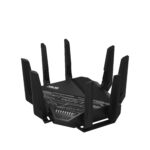Streaming content from a PC to a TV opens up exciting possibilities for entertainment, productivity, and sharing experiences with others. Whether you want to watch movies, play games on a bigger screen, or give presentations, connecting your computer to your television can significantly enhance your viewing experience. There are several methods to stream from a PC to TV, including HDMI cables, wireless technologies like Miracast, and streaming devices such as Chromecast, each offering different benefits depending on your specific needs and equipment.
Modern smart TVs make the process easier than ever, often featuring built-in capabilities to connect with your Windows 11 PC or other computers. Many options don’t require technical expertise – you can be up and running in minutes with the right equipment. The technology has improved dramatically in recent years, offering better quality streaming with less lag and fewer connection issues.
Before diving into the setup process, it’s helpful to understand which method will work best for your particular devices. Some solutions like screen mirroring with Miracast require compatible hardware on both ends, while others like HDMI connections are more universal but require physical cables between devices.
Methods to Stream Content from a PC to a TV
Streaming content from a PC to a TV is easier than ever, thanks to modern technology and multiple connectivity options. Whether you want to watch movies, play games, or mirror your screen for work or presentations, there’s a method suited for every need. Below, we explore various ways to stream content from your PC to your TV, along with their benefits and potential drawbacks.
1. HDMI Cable – The Most Reliable Option
If you’re looking for the simplest and most reliable method, using an HDMI cable is your best bet.
How to Set It Up:
- Plug one end of the HDMI cable into your PC and the other into your TV’s HDMI port.
- Use your TV remote to switch to the corresponding HDMI input.
- Your PC should detect the TV as a secondary display. You can mirror or extend the screen in your display settings.
Pros:
✔ No lag or buffering issues
✔ Supports high-definition video and audio
✔ Ideal for gaming, movies, and presentations
Cons:
✖ Requires a physical cable connection
✖ Limited by the length of the HDMI cable
2. Wireless Streaming with Chromecast
Google Chromecast is a popular and convenient way to wirelessly stream from your PC to your TV.
How to Set It Up:
- Plug the Chromecast device into your TV’s HDMI port and connect it to Wi-Fi.
- On your PC, open Google Chrome, click on the three-dot menu, and select “Cast.”
- Choose your Chromecast device, and you can mirror your entire desktop or just a specific tab.
Pros:
✔ No cables required
✔ Easy to use and supports multiple devices
✔ Works well with YouTube, Netflix, and other streaming services
Cons:
✖ Some lag, especially for gaming
✖ Limited to 1080p unless using Chromecast Ultra for 4K streaming
3. Streaming via Miracast and Wireless Display Adapters
Miracast is a wireless technology that allows you to mirror your PC screen to a Miracast-compatible TV or adapter.
How to Set It Up:
- Ensure both your PC and TV support Miracast (if not, you can use a Miracast adapter).
- On Windows, press Windows + K and select your TV from the list of available devices.
- Once connected, your PC screen will be mirrored on your TV.
Pros:
✔ No additional software required
✔ No internet connection needed
✔ Works well for presentations and casual streaming
Cons:
✖ Latency issues may occur, especially in fast-paced games
✖ Not all TVs and PCs support Miracast
4. Using Apple AirPlay (For Mac & iPhone Users)
If you own a Mac or an Apple TV, you can easily stream content using AirPlay.
How to Set It Up:
- Ensure both your Mac and Apple TV are on the same Wi-Fi network.
- Click on the AirPlay icon in the menu bar and select your Apple TV.
- Choose whether to mirror your screen or extend it.
Pros:
✔ Seamless integration with Apple devices
✔ Supports high-quality video and audio
✔ Works wirelessly
Cons:
✖ Only available for Apple devices
✖ Requires an Apple TV or AirPlay-compatible TV
5. Streaming Through DLNA (Digital Living Network Alliance)
DLNA allows you to stream content from your PC to a smart TV that supports DLNA without needing additional hardware.
How to Set It Up:
- Enable Media Streaming on your PC:
- Go to Control Panel > Network and Sharing Center > Media Streaming Options
- Turn on media streaming
- On your Smart TV, navigate to the Media Player app and select your PC as a source.
- Browse and play your media files directly from your TV.
Pros:
✔ No need for extra devices
✔ Works over Wi-Fi
✔ Great for streaming local media files
Cons:
✖ Does not support screen mirroring
✖ Some file formats may not be compatible
6. Game Streaming via Steam Link or Nvidia GameStream
For gamers, Steam Link and Nvidia GameStream offer powerful ways to stream PC games directly to a TV.
How to Set It Up:
- Steam Link:
- Download the Steam Link app on your TV or use the Steam Link hardware.
- Connect both your PC and TV to the same Wi-Fi network.
- Open Steam on your PC and start streaming.
- Nvidia GameStream:
- Requires an Nvidia GPU and an Nvidia Shield TV.
- Open GeForce Experience, enable GameStream, and connect to your Shield TV.
Pros:
✔ Optimized for gaming with low latency
✔ High-quality streaming (up to 4K with Nvidia GameStream)
✔ Works over Wi-Fi or Ethernet
Cons:
✖ Requires additional hardware (Steam Link or Nvidia Shield)
✖ Performance depends on network speed
Final Thoughts: Choosing the Best Streaming Method
The best method for streaming content from your PC to your TV depends on your needs:
- If you want a lag-free experience, go with an HDMI cable.
- For convenient wireless streaming, Chromecast or Miracast are great choices.
- Apple users should utilize AirPlay for seamless connectivity.
- Gamers will benefit from Steam Link or Nvidia GameStream.
By selecting the right method, you can enjoy high-quality streaming with minimal hassle. Happy streaming! 🚀
Key Takeaways
- Multiple connection options exist including HDMI cables, wireless technologies, and dedicated streaming devices.
- Check device compatibility before selecting a streaming method to ensure seamless connectivity.
- Wireless solutions offer convenience while wired connections typically provide the most reliable and highest quality streaming experience.
Understanding Streaming Technologies
Streaming technology connects computers to televisions through various protocols and connections. These technologies enable users to share content from their PC to their TV with different levels of quality, convenience, and compatibility.
Basics of Streaming From PC to TV
PC to TV streaming allows users to display computer content on a larger screen. This process works by transmitting audio and video signals from a computer to a television through wireless or wired connections.
The most common streaming methods include WiFi Direct connections, screen mirroring, and media server applications. WiFi Direct creates peer-to-peer connections without requiring a router.
For Windows 11 users, the built-in casting feature makes it simple to wirelessly connect to compatible TVs. Users can display anything from their computer screen on the TV, making it ideal for videos, photos, or presentations.
Media server applications like Plex or VLC can stream specific content rather than mirroring the entire screen. This method allows for better quality playback of media files.
Key Streaming Protocols and Standards
DLNA (Digital Living Network Alliance) is a common protocol that enables computers and TVs to share media over a home network. Many smart TVs are DLNA-certified, allowing them to discover and play content from DLNA servers on your computer.
Miracast functions as a wireless HDMI connection, making it easy to transmit PC content to TVs. It’s built into Windows 10/11 and many Android devices.
Chromecast devices plug into TV HDMI ports and receive content “cast” from computers and mobile devices. They’re particularly useful for streaming media from browsers or compatible apps.
Apple AirPlay allows Mac users to stream content to compatible TVs or Apple TV devices with excellent quality and reliability.
| Protocol | Compatibility | Quality | Ease of Use |
|---|---|---|---|
| DLNA | Widespread | Good | Medium |
| Miracast | Windows/Android | Very Good | Easy |
| Chromecast | Cross-platform | Excellent | Very Easy |
| AirPlay | Apple devices | Excellent | Very Easy |
Different Display Connections
HDMI (High-Definition Multimedia Interface) provides the most straightforward and highest quality PC to TV connection. A single cable carries both audio and video signals with no lag or quality loss.
Wireless HDMI transmitters offer the same quality as wired HDMI without physical cables. These devices consist of a transmitter (connected to PC) and receiver (connected to TV).
Legacy connections like VGA and DVI can work with older TVs but typically require separate audio cables. VGA only carries video signals and has lower resolution capabilities than modern standards.
For optimal streaming quality, wired connections provide lower latency and minimal interference compared to wireless options. HDMI cables remain the gold standard for reliable high-definition streaming.
Smart TVs now commonly feature multiple HDMI ports, USB inputs, and built-in wireless display capabilities, making them increasingly versatile for PC connections.
Preparation and Requirements
Before streaming PC content to a TV, proper setup is essential to ensure a smooth viewing experience. The right hardware compatibility, network stability, and software tools will determine how well your streaming performs.
Checking Device Compatibility
The first step is verifying if your devices can work together. Most modern Smart TVs include Miracast support for wireless connections.
For Windows PCs, both Windows 10 and 11 have built-in casting capabilities through the “Cast” function. To check if your PC supports Miracast:
- Press Win+K on your keyboard
- Look for nearby devices
- If devices appear, your PC supports wireless streaming
For TVs without built-in Miracast, external adapters are available. These plug into HDMI ports and create the wireless connection your TV may lack natively.
Compatibility Checklist:
- PC: Windows 10/11 with wireless capabilities
- TV: Smart TV with Miracast OR standard TV with Miracast adapter
- Both devices connected to the same network
Setting Up a Strong Wi-Fi Network
Wireless streaming demands a reliable network connection. Buffering and quality issues often stem from poor Wi-Fi performance rather than device limitations.
The ideal Wi-Fi setup includes:
- Router placement: Central location with minimal walls between devices
- Network band: 5GHz offers faster speeds for streaming (though with shorter range)
- Network congestion: Fewer connected devices means better performance
For optimal streaming, position both the PC and TV within strong signal areas. Signal strength can be checked on the PC by looking at the Wi-Fi icon in the taskbar.
Router quality matters significantly. Older routers may struggle with video streaming, even with good signal strength. Consider upgrading to at least AC standard routers for HD content streaming.
Required Hardware and Software
The hardware needed depends on your chosen connection method. Wireless connections require compatible devices, while wired connections need the appropriate cables.
Hardware Options:
- Wireless: Built-in Miracast support on both devices
- HDMI direct: HDMI cable (best for gaming due to minimal lag)
- Adapters: Miracast dongles, Chromecast, or other streaming devices
For Windows 11 users, the process is straightforward as casting capabilities are integrated into the system. Access the quick settings menu by pressing Win+A, then select Cast to find available devices.
Additional software is rarely required for basic streaming, but specialized apps can enhance the experience. For instance, the Wireless Display app (available from Microsoft Store) provides more control options for Miracast connections.
Media server software like Plex can also be beneficial for streaming stored content with a more polished interface and better format compatibility.
How To Stream From PC to TV
Connecting a PC to a TV opens up possibilities for bigger-screen viewing of movies, games, and presentations. Several methods exist, from simple cable connections to wireless solutions that offer flexibility.
Using Wired Connections
The most reliable way to stream content from a PC to a TV is through a direct HDMI cable connection. This method provides the highest quality video and audio transmission with minimal lag.
Steps for HDMI Connection:
- Locate the HDMI output port on your PC or laptop
- Connect one end of the HDMI cable to your computer
- Connect the other end to an available HDMI port on your TV
- Select the corresponding HDMI input on your TV using the remote
For older computers without HDMI ports, adapters are available. VGA to HDMI adapters work for video, but require a separate audio cable for sound. DisplayPort to HDMI and USB-C to HDMI adapters offer all-in-one solutions for newer devices.
The main advantage of wired connections is the stable, high-quality signal. There’s no need to worry about Wi-Fi strength or interference from other devices.
Wireless Streaming Options
Wireless streaming eliminates cable clutter and allows for flexible viewing from anywhere in the room. Several technologies make this possible.
Miracast is built into Windows 10 and 11, allowing users to cast to an external display without additional hardware if the TV supports it. To use Miracast:
- Press Win+K or select “Cast” from the action center
- Choose your TV from the list of available devices
- Wait for the connection to establish
Chromecast offers another popular option. Users can mirror their entire desktop or cast specific content from Chrome:
- Install Google Chrome on your PC
- Click the three dots menu, then “Cast”
- Select your Chromecast device
Wireless HDMI kits provide a solution for TVs without smart capabilities. These transmitter-receiver pairs create a wireless bridge between devices with minimal setup.
Software Solutions for PC to TV Streaming
Various applications enhance the streaming experience by providing additional features and compatibility options.
Media Server Software:
- Plex creates a personalized streaming service from your media files
- Kodi offers a customizable interface for navigating content
- Windows Media Player includes basic casting functionality
Streaming apps like Netflix and YouTube have built-in casting capabilities. Users can start playback on their PC and transfer it to supported smart TVs with a single click.
Third-party solutions provide expanded functionality. Programs like AirServer allow Windows PCs to receive AirPlay streams, while Steam Link specializes in game streaming to TVs.
For business settings, software like Microsoft’s Wireless Display Adapter app optimizes presentations and meetings. It includes features for annotation and easier transition between presenters.
Remote desktop applications offer full control of a PC from the TV interface, useful for accessing content not supported by other streaming methods.
Step-By-Step Streaming Setup
Setting up your PC to stream content to your TV involves a few simple technical adjustments and connection methods. Modern Windows systems offer multiple ways to wirelessly display your computer screen on a larger TV display.
Configuring Display Settings
To begin streaming your PC to your TV, you’ll need to configure your display settings correctly. In Windows 10, press Windows key + P to open the Project menu. This gives you four options: PC screen only, Duplicate, Extend, or Second screen only.
For streaming content, “Duplicate” will mirror your PC screen to the TV, while “Extend” creates a separate display area.
For Windows 11 users, you can also access these options through the Action Center by clicking the network icon in the taskbar. Select “Project” and choose your preferred display mode.
Make sure both your PC and TV are connected to the same Wi-Fi network for the smoothest connection experience. This is essential for all wireless streaming methods.
Connecting Using Miracast or Chromecast
Miracast is built into Windows 10 and 11, making it an easy way to connect your PC to a compatible smart TV. To use Miracast, press Windows key + K or open the Action Center and select “Connect.”
Your PC will scan for available devices – select your TV when it appears in the list. Some TVs may require you to approve the connection on the TV screen.
For Chromecast connections, you’ll need:
- A Chromecast device plugged into your TV
- Google Chrome browser on your PC
- Both devices on the same Wi-Fi network
Open Chrome, click the three-dot menu, and select “Cast.” Choose your Chromecast device from the dropdown menu to begin streaming.
Chromecast allows you to cast a specific tab, your entire desktop, or supported applications like YouTube and Netflix directly.
Utilizing DLNA Servers
DLNA (Digital Living Network Alliance) provides another method for streaming media from your PC to your TV. Unlike Miracast or Chromecast, DLNA focuses on sharing media files rather than mirroring your entire screen.
To set up DLNA on Windows:
- Open Settings → Network & Internet → Sharing options
- Turn on network discovery and file sharing
- Right-click on the media files you want to share
- Select “Give access to” → “Media streaming”
Your DLNA-compatible TV should now be able to access these files through its media browser interface. Many smart TVs have this capability built in.
For more specific media streaming, applications like Plex or VLC can function as DLNA servers with additional features. These apps organize your media library and make it accessible to your TV with added benefits like metadata and playback resume.
DLNA works best for sharing videos, music, and photos rather than applications or games.
Troubleshooting Common Issues
When streaming PC to TV, technical problems can interrupt your viewing experience. Quick fixes exist for most common streaming issues, from wireless connection failures to audio delays.
Resolving Connectivity Problems
Connection issues often prevent successful PC-to-TV streaming. If your computer doesn’t recognize your TV, try these solutions:
Check Wi-Fi Network:
- Ensure both devices connect to the same Wi-Fi network
- Move router closer to both devices
- Restart your router to refresh connections
Update Device Drivers:
- Right-click Start button → Device Manager
- Expand “Display adapters” and “Network adapters”
- Right-click each device → “Update driver”
Restart Both Devices:
Simply turning off and restarting your PC and TV can solve many connection problems. This refreshes system processes and connection protocols.
For Windows users experiencing Miracast problems, check that your PC has Miracast support in Display settings.
Fixing Audio/Video Synchronization
Audio delays and video stuttering can ruin the streaming experience. These issues often stem from bandwidth limitations or settings misconfigurations.
Audio Troubleshooting:
- Check physical connections if using HDMI
- Verify audio output settings in Windows Sound settings
- Try different audio cables if applicable
Video Lag Solutions:
- Lower streaming resolution in your PC’s display settings
- Close background applications consuming bandwidth
- Use wired connections for more stable streaming
If using a streaming app, clear its cache or reinstall it. Many synchronization problems resolve after app refreshes.
Quick Settings Check:
Access your TV’s settings menu and look for “A/V Sync” or “Audio Delay” options that might need adjustment.
Handling Compatibility and Performance Setbacks
Not all streaming methods work with every device combination. Performance issues often stem from hardware limitations or software incompatibilities.
Resolution Mismatch:
If your screen appears blank or distorted, adjust your PC’s resolution to match your TV’s native display capability. Windows users can right-click desktop → Display settings → Resolution.
Platform-Specific Issues:
- Windows: Enable projection features in Action Center
- macOS: Verify AirPlay compatibility with your TV model
- Smart TV: Update TV firmware to latest version
Performance Optimization:
- Use screen mirroring for basic tasks and presentations
- For video streaming or gaming, try dedicated apps or HDMI
- Consider a streaming device like Chromecast for better performance
If experiencing persistent screen mirroring problems, verify your TV’s manufacturer hasn’t disabled the feature with recent updates.
Applications for PC to TV Streaming
Connecting a PC to a TV opens up many possibilities for entertainment, work, and gaming. Modern software makes it easy to display computer content on larger screens with better resolution and sound quality.
Entertainment: Streaming Videos and Music
Streaming media from a PC to TV has become increasingly popular for watching movies, TV shows, and listening to music on a bigger screen. Services like Netflix and YouTube can be accessed directly through a web browser and cast to a TV.
One common method is using Google Chrome’s built-in casting feature. Users simply need to:
- Open Chrome on their PC
- Click the three-dot menu
- Select “Cast…” option
- Choose their TV from the device list
For those who prefer dedicated software, Plex offers a comprehensive solution. It organizes personal media libraries and streams them to any device connected to the same network.
Emby provides similar functionality but requires an annual subscription for full features. Both options support high-definition streaming and allow users to access their content remotely.
Work and Education: Presentations and Conferences
Professional environments benefit greatly from PC to TV streaming capabilities. Presenting work on a larger screen improves visibility and impact in meetings and classrooms.
Windows 10 includes built-in screen mirroring functionality:
- Press Win+K to open the Connect panel
- Select the TV or wireless display
- Choose to duplicate or extend the screen
This feature proves invaluable for displaying PowerPoint presentations, spreadsheets, or educational content. HDMI connections offer the most reliable experience for important presentations where wireless might be unreliable.
For remote work and virtual conferences, applications like Zoom and Microsoft Teams include options to share content directly to smart TVs. This creates a more comfortable viewing experience during long virtual meetings.
Gaming: Utilizing PC to TV Gaming Platforms
PC gaming on a TV combines the processing power of a computer with the comfort of couch gaming. Steam Link stands as one of the most popular gaming streaming solutions.
Steam Link allows users to:
- Stream games from their gaming PC to any TV
- Use wireless controllers connected to the TV
- Play at resolutions up to 4K (with sufficient bandwidth)
- Enjoy low-latency gaming with minimal setup
NVIDIA GameStream offers similar functionality for PCs with NVIDIA graphics cards. The service works with the NVIDIA Shield streaming device to deliver high-quality game streaming with low latency.
For casual gamers, Chromecast provides a budget-friendly option to stream games. While not optimized for competitive gaming, it works well for turn-based or casual titles where split-second reactions aren’t critical.







